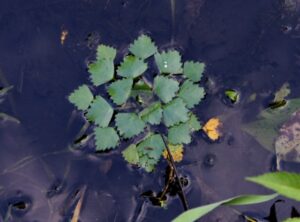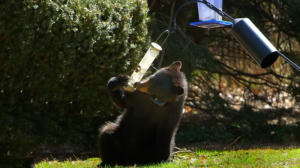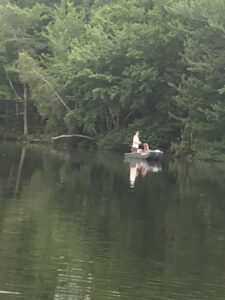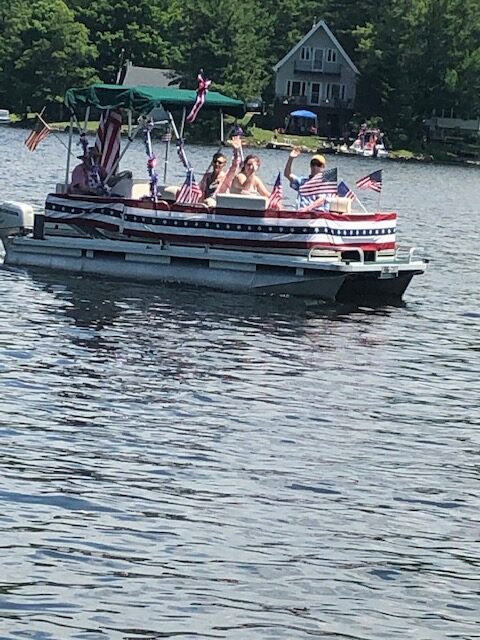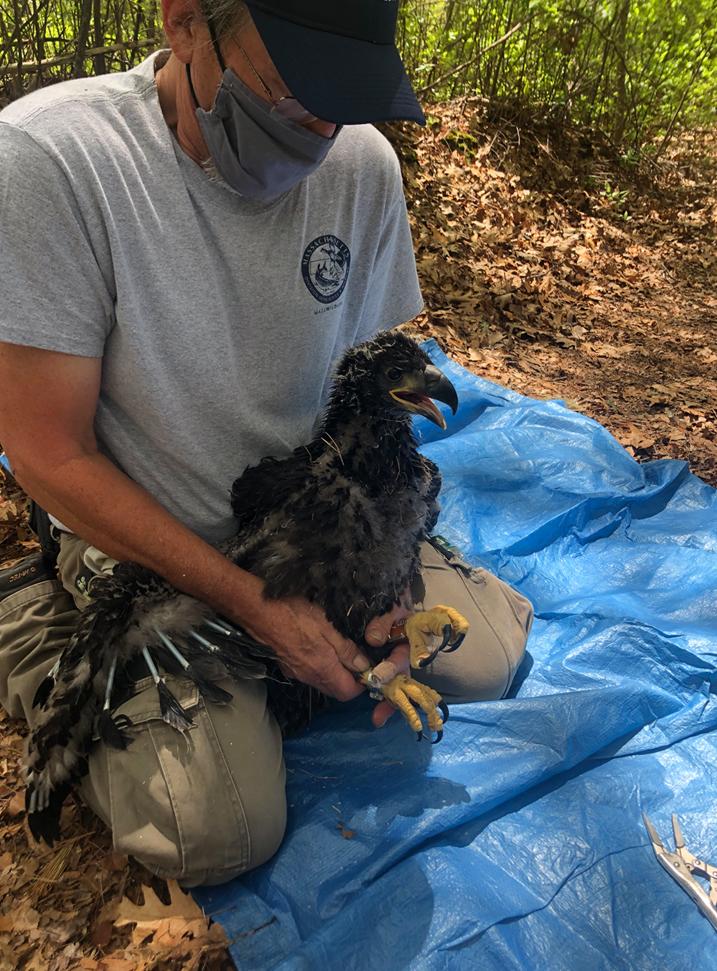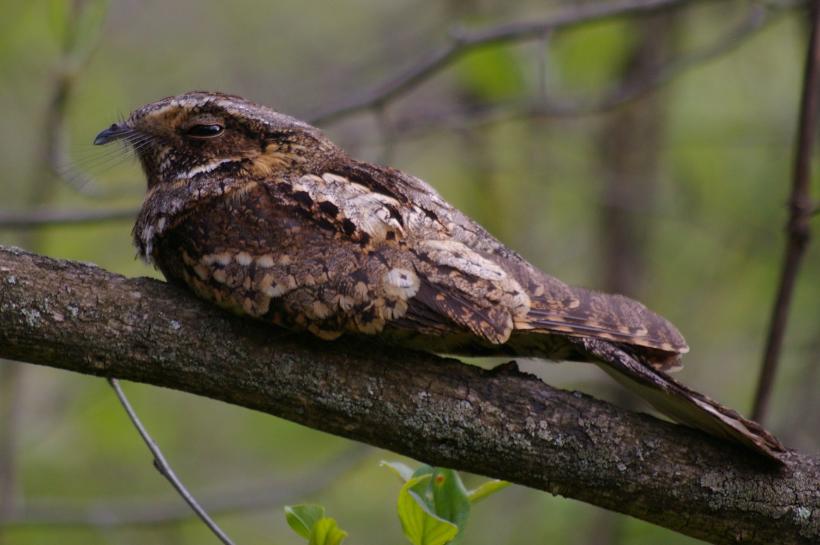The Franklin Land Trust (FLT) recently acquired for conservation 154 acres in Heath abutting its 96-acre Crowningshield Conservation Area (CCA). The 154-acre parcel purchase – which took place on June 25, 2020 from the Gu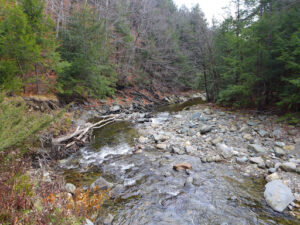 dell Family – was supported by funding from the MA Dept of Fish and Game; local, state and national chapters of Trout Unlimited; the John T. and Jane A. Wiederhold Foundation; the William P. Wharton Trust; and Franklin Land Trust’s Heath Conservation Fund.
dell Family – was supported by funding from the MA Dept of Fish and Game; local, state and national chapters of Trout Unlimited; the John T. and Jane A. Wiederhold Foundation; the William P. Wharton Trust; and Franklin Land Trust’s Heath Conservation Fund.
Tom Curren, FLT Executive Director, is thrilled to see this project cross the finish line. “This is a fine example of FLT’s partnership with other organizations in pursuit of shared conservation goals. We’re proud to expand here upon the work accomplished during decades of efforts by local volunteers, private groups, other non-profits, and governmental agencies.
” FLT’s Crowningshield Conservation Area was originally purchased and protected in 2015 with the support of local and regional Trout Unlimited chapters. It is preserved permanently under a Conservation Restriction held by the MA Dept of Fish and Game. “This land protection project and the habitat restoration of the uplands and stream habitat in the North River West Branch is the result of an incredible long term partnership including Franklin Land Trust, Trout Unlimited, MassWildlife, private foundations and local residents,” said Department of Fish and Game Commissioner Ron Amidon.
“The conservation restriction we acquired ensures permanent protection of the land, access for hunting, fishing, hiking, and birding, and protection of one of the finest cold-water fisheries in the region.” CCA has over one mile of river frontage on West Branch Brook, a tributary of the North River and an important subwatershed of the Deerfield River for native brook trout. In their native range, wild brook trout are a valuable indicator species for the overall health of a river and its watershed. They require clean, cold water to thrive and have seen sharp population declines due to warming water temperatures, pollution, and loss of habitat.
FLT’s partnership with Trout Unlimited offers a unique opportunity for those who care about fishing, climate change, and land conservation to take real and meaningful action. “Our partnership with the Franklin Land Trust goes beyond our local chapter,” said Michael Vito, president of the Deerfield River Watershed Trout Unlimited Chapter #349. Paul Beaulieu, president of the Mass-Rhode Island Trout Unlimited Council, notes “The Council, a number of Massachusetts TU chapters, and individual TU members from around the Commonwealth reached into their own pockets and generously contributed to this purchase. We even got a grant from TU National’s Cold-Water Land Conservation Fund.” Bill Pastuszek, Mass Representative to TU’s National Leadership Council, noted:
“The West Branch of the North River is an important native brook trout stream in Massachusetts. We all want to see it protected. The diversity and breadth of support for this acquisition shows the importance associated with this effort to preserve and enhance this resource.” The Deerfield TU chapter will now start planning conservation projects to help protect and enhance the West Branch’s cold-water fishery. “We’ll start doing an assessment of this new stretch of river and see what it needs,” Vito said. Fish assemblage, bank erosion prevention, fish habitat restoration and a macro invertebrate study have already been completed by Trout Unlimited, FLT and Cole Ecological, Inc. in the Crowningshield portion of the West Branch.
The newly acquired 154-acre parcel abuts the original 96-acre CCA to the south of West Branch Brook, ensuring that both sides of this cold-water stream and the drainages that feed it are permanently protected. “FLT is thinking about land conservation on a watershed scale,” said FLT Head Land Steward Will Anderson. “Tributaries and headwaters like those found at Crowningshield Conservation Area and the new Gudell acquisition are fed by groundwater and travel through shaded forests, supplying important cold water to the mainstems within the watershed. This cold water is critical to many aquatic species facing warming temperatures due to climate change.”
“The Gudell acquisition was the last piece of a very large puzzle,” said Alain Peteroy, FLT’s Director of Land Conservation. The Gudell parcel connects CCA to a 60-acre Mass Audubon wildlife sanctuary along its eastern border, and FLT recently conserved a small farm field, now owned by Heath Farmer Mike Freeman, that abuts the northern boundary of the CCA. The Freeman Farm produces organic beef, honey, and maple syrup and abuts 130 acres of privately conserved land on its northeastern boundary. Continuing north, the HO Cook State Forest offers an additional 918 acres of conserved land in the region. “This has been a continued process of building a significant conservation block, incorporating Sanders Brook and the West Branch of the North River,” said Peteroy. “We are looking at almost 500 acres of conserved land sitting next to over 900 acres of state forest land, all with tributaries that drain into the Deerfield River.”
But as our rivers and streams face the impacts of climate change, land conservation is just one part of the solution. FLT, the Massachusetts Woodlands Institute (MWI), and Trout Unlimited are working to restore fish habitat by developing a new program called Forests for the Fish. This project is designed to enhance habitat for cold water fish by offering tools to forest landowners interested in improving fish habitat in their forest streams. “Private landowners – farms, families, organizations, and individuals – own over 2 million acres of forest in Massachusetts. This places the future of threatened species like native brook trout squarely in all of our hands,” said Emily Boss, MWI Executive Director. “Forests for the Fish will connect landowners who love and cherish their woodland streams with management resources and expertise.”
To learn more about the Forests for the Fish program email info@masswoodlands.org. The Gudell parcel will be open to the public for hiking, fishing, birding, and hunting. Access to this newly acquired land will be through the trails at Crowningshield Conservation Area off West Branch Road. To learn more about the Crowningshield Conservation Area, and the Forests for the Fish program, visit www.franklinlandtrust.
Readers may recall my July 19, 2022 column entitled Climate change and the effects on brook trout, particularly the section which included these words from Dr. Rebecca M. Quinones, the MassWildlife Rivers and Stream Project Leader:
“By 2099 there could very well be a 77% drop in the cold-water streams available for habitat for brook trout (in MA). The projections indicate that perhaps some of the cold-water streams located primarily in north western MA could be cold-water climate change refugia. Even with a 6 degree C temperature increase, they could still provide cold water habitat for brook trout.”
Well guess what. The Crowningshield land and other abutting protected lands, which total approximately 1,400 acres are right in the middle of that northwest section of MA which is so critical. To reiterate, they incorporate Sanders Brook and the West Branch of the North River which are tributary streams to the Deerfield River
NYS Hunting and Trapping Licenses go on sale tomorrow
There are a considerable number of local hunters who hunt over in New York State. If you are one, please know that that hunting and trapping licenses and Deer Management Permits (DMPs) for the 2020-2021 season will go on sale tomorrow, August 10.
You can purchase licenses and permits at any one of the Department of Environmental Conservation license-issuing agents or by telephone at 866-933-2257. The new hunting and trapping licenses are valid from Sept. 1, 2020 through Aug. 31, 2021, while annual fishing licenses are valid for 365 days from date of purchase.
Adult non-resident hunting license fees are $100. To that add $30 for a bow permit, $30 for a muzzleloader permit and $20 for a turkey permit if you hunt them there.

